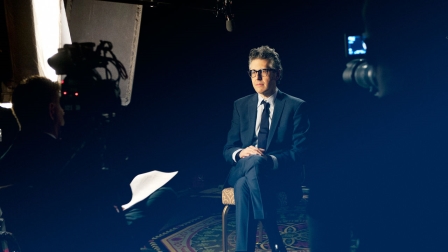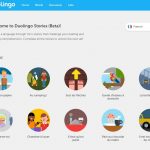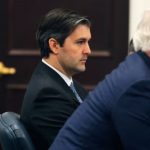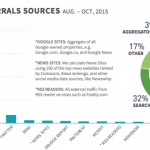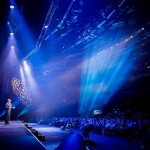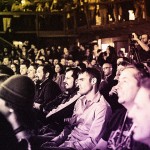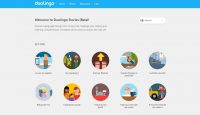This American Fight
This spring, This American Life and its creator and host, Ira Glass, became the latest flashpoints in a long-simmering public radio civil war.
Glass had recently signed a deal to distribute the hour-long show through streaming audio service Pandora, a potentially lucrative partnership that promised to bring in millions of new listeners to what is already one of the most visible and well-loved audio programs in the English-speaking world.
Executives at struggling stations, however, were not exactly thrilled. After the news broke, Mike Savage, a member of NPR’s 23-person board of directors and the station manager of WBAA, at Purdue University in West Lafayette, Ind., wrote a short post on LinkedIn explaining why he planned to drop TAL from his station, and why he thought other stations should, too.
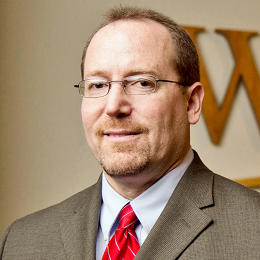
His message was measured and diplomatic, befitting the mannered world of public radio; its one concession to raw emotion was a single underlined sentence. At the same time, it was also full of vague allusions and public media dogwhistles hard to parse from the outside.
“The decision to do this was not taken lightly and was made for a variety of factors,” he wrote, without mentioning any others. “But one really stood out—the recent decision by Ira Glass to distribute the program to paid subscription service Pandora.”
The fact that the show is available over Pandora made Savage question the entire idea of offering it to his listeners, or whether it was even public media at all. “We must respect the mission,” he wrote, implying that Glass’s pursuit of a wide audience via a lucrative partnership was not the way things are done in the world of public media.
His post got dozens of “likes,” and prompted a public debate among current and former NPR executives, including Ira Glass.
“One of the sacrifices I made is that I joined LinkedIn in order to respond,” Glass said over the phone on a recent afternoon. “Then, as soon as the whole thing was over, I quit.”
Why did a distribution deal make a public radio station want to drop one of its most beloved programs? If you’re confused, so was Ira Glass.
“I just didn’t understand what his issue was,” he said over the phone on a recent afternoon. (Savage declined to comment for this story.) In his eventual reply, Glass stressed that any money generated by the show was being put back into the show. “Mike has asked, what do member stations get out of it, when a show like ours generates revenue from Pandora and from elsewhere outside the system? My answer is: better programming.” Several other public radio luminaries chimed in to support Glass, and Savage deleted the exchange (it lives on in a Tumblr archive).
This was just a small skirmish in a much larger conflict centering on an increasingly urgent question: How should public radio engage with the rapidly expanding world of streaming and downloadable digital audio, and who exactly should profit? Shouldn’t the radio network that invented the bemused and curious storytelling style that permeates podcasting be absolutely crushing everyone else in online audio, instead of simply maintaining a respectable lead over its competitors? Why does NPR need 33 podcasts to reach 8 million people, per Podtrac’s rankings, but the team behind This American Life only needs two to reach five million? And why aren’t its flagship shows, Morning Edition and All Things Considered, available as podcasts?
To figure out what’s really going on here, you have to look at the structure and mission of public radio in the United States. NPR was created in 1967 when Lyndon Johnson signed the Public Broadcasting Act into law, which also created PBS. NPR broadcast its first show, an episode of the evening newsmagazine All Things Considered, in May of 1971. Its very 1970s original mission to was to “serve the individual,” “promote personal growth,” “celebrate the human experience,” and “encourage a sense of active constructive participation, rather than apathetic helplessness.”
This first show led with correspondent Jeff Kamen reporting from a Washington, D.C. anti-war protest, saying, “Today, in the nation’s capitol, it is a crime to be young and have long hair.” The show went out to 90 stations.
In some ways, NPR is like a television network. It centrally produces shows and sends them to its local affiliates, now numbering more than 900. Those affiliates air NPR shows alongside other syndicated programs—shows like The Moth Radio Hour and The Tavis Smiley Show—which come from an alphabet soup of distributors including PRI, PRX, and APM. Confusingly, even programs produced by NPR affiliates like studio 360 and The Takeaway (both from WNYC) are often distributed by organizations other than NPR; This American Life is produced by Chicago’s WBEZ and distributed by PRX.
Very much unlike a TV network, however, NPR’s local affiliates are extremely influential in the decision-making of the national organ. This control is both explicit and implicit. Its 23-person board includes 12 station managers from around the country. There’s also a monetary dimension. In 2015, payments from member stations to NPR added up to $77 million, a little less than 40% of its annual budget of $193 million. The rest comes from corporate sponsorships, grants, and an assortment of smaller sources.
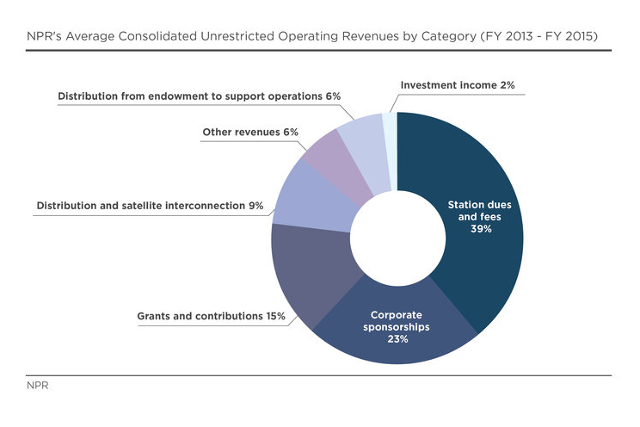
Those member stations, in turn, get most of their money from donations and underwriting—public radio speak for advertising. Those two buckets make up just over 50% of an average member station’s budget, according to estimates published by NPR (the rest comes largely from an assortment of public and private grants).
This arrangement has meant that in many ways the member stations chart NPR’s course. Since they view a direct connection with their listeners as their most valuable asset, anything that circumvents them and connects NPR writ large or one of its programs directly with you, the listener, is viewed with suspicion if not outright hostility. This logic has diverse implications. Even though, again, This American Life is not distributed by NPR, the reaction to the Pandora deal illustrates a prevailing attitude.
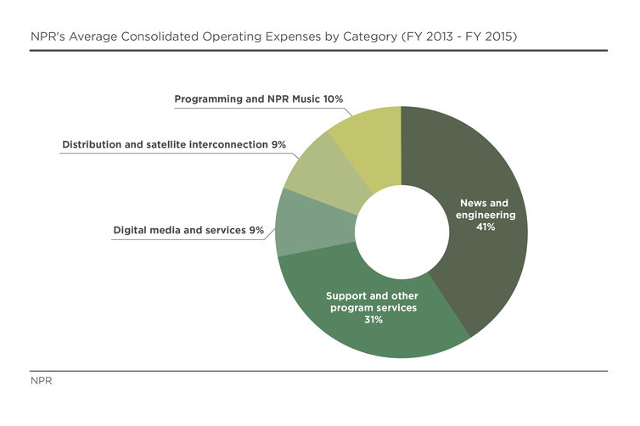
“Ira Glass, during the intro to his show, will mention where you can find This American Life, through the podcast or where you can find it on other places—on Pandora,” said Dan Bindert, a public radio station manager in Chicago. (Glass does not regularly advertise its Pandora stream on his radio show, but he points listeners to the show’s website.) “If you’re a station manager, maybe that’s something that shouldn’t have in the broadcast, maybe the individual stations should cut that out. If you’re airing a program on television, you wouldn’t advertise the fact that you can watch it on another station.”
In essence, Bindert doesn’t see why stations, struggling to maintain their budgets and attract donors, should help a program build its own audience elsewhere. (His station, WDCB, is an affiliate of Public Radio International and not an NPR member station.) “If Serial,” Sarah Koenig’s popular podcast, a This American Life spin-off, “is aired on This American Life and all these public stations that have built up the audience for This American Life aired the broadcast that include Serial, and then they say go elsewhere for Serial and none of the money is going to come to the station, all of the money… goes directly to Ira to produce,” said Bindert.
“Now, it’s great for Ira that he’s able to expand his staff and do great work, there’s no question, he does exceptional work, but at some point should the stations just say, ‘Well hey, you’re airing an episode of Serial and we’re not getting the rest of the program. Is this an infomercial for a commercial product?’ You’ve got people using the public broadcasting states to promote the things that will help the individual producer, but won’t help the system. It doesn’t help the station.”
Some feel that this attitude—that the primary way NPR should serve its listeners is by supporting its member stations—keeps it from leading and innovating in the digital audio space. Shouldn’t it be focusing instead on its audience, wherever works best?
“The most uncharitable way to read this is to call this a hostage situation,” said Nick Quah, author of the popular digital audio industry publication Hot Pod. NPR, he said, “probably has the potential to be the most reliable network of journalists across the country that can serve listeners and readers directly. The tension I personally feel as a consumer is that the member stations are holding them back. NPR’s original mission was to serve the member stations, understanding those stations as proxy of the American public.”
This structure and this set of incentives have very negative consequences, Glass told me. “When it comes to innovation, they’ve always been terrible,” he said. “They have a terrible track record. The Fox Network in any given year invents new and more kinds of shows than NPR does by far.”
NPR denies that it is under-producing in the digital realm. Spokesperson Isabel Lara described “an incredible amount of innovation going on.” She points out that the network is the leading publisher according to Podtrac’s rankings, with its 33 podcasts garnering a unique monthly audience of 8,506,000 in August, helped by popular new shows like Code Switch and the just-launched How I Built This. NPR’s chief digital officer, Tom Hjelm, agrees. Hjelm, who until recently held a similar job at New York’s WNYC, says it’s his role to figure out “how we can make the world a better place, how we can propel the values and the offerings of NPR and public radio into the digital era and beyond? That’s a wonderful challenge.”
Hjelm emphasizes that NPR’s digital footprint is “not audio only, but we’re audio first.” He has focused on hosting breaking news as text on NPR.org, figuring out a productive way to engage with Facebook Live (like some other media outlets, Facebook is paying NPR to experiment here), and working with social platforms. But he is also thinking about new ways to create and distribute audio, and to capitalize on the company’s ability to offer breaking insight and commentary online around major news events.
Game Of Microphones
The tensions extend beyond programming and into product development. In 2014, newly installed NPR CEO Jarl Mohn forced out chief content officer Kinsey Wilson. That move was widely seen as a rebuke to his vision of a digitally focused, national-first NPR.
One of Wilson’s central innovations was NPR One, an app three years in the making that streams digital content directly to a listener’s device, and uses an algorithm and editors to build playlists tailored to listeners’ interests. In a concession to member stations, it also uses geolocation to connect a user to their local public radio station. In concept, it was NPR’s big digital play.
The promotion of NPR One was unusually fraught, with member stations opposed to it. A widely circulated rumor in the public radio world says that NPR couldn’t convince member stations to even utter the the app’s name, and was reduced to purchasing air time on their own affiliates to get it mentioned. NPR denies this. An internal memo circulated to all NPR journalists from March of this year outlining on-air guidelines signaled a quiet defeat for the app (emphasis theirs), “No NPR One: For now, NPR One will not be promoted on the air.” The same memo forbid “tell[ing] people to actively download a podcast or where to find them.”
In our interview, Hjelm demurred when I asked him if NPR One was NPR’s flagship digital product, pointing to its website and news app. He acknowledged the controversy it faced.
“On the face of it, there are questions about it” from NPR member stations. “I’m not going to say there’s skepticism or antagonism toward NPR One, but part of my job is to work with the station and help them understand the value proposition that a product like NPR One brings, the value that it delivers to the system as a whole.”
As of July, NPR says NPR One is growing its audience by about 10% every month. About 40% of its users are under 35 years old, and more than a quarter say the app has led them to listen to broadcast radio more often.
As things stand, NPR is far from being in a crisis. Its two flagship news programs, All Things Considered and Morning Edition, both have massive and enviable radio audiences. In the fall of 2015, ME had 12.6 million listeners, while ATC had 12.5 million. To give a sense of scale (and although the numbers aren’t directly comparable) the top-rated network TV morning show, Good Morning America, had 4.2 million average daily viewers the week of August 1, and the top-rated evening news broadcast, NBC Nightly News with Lester Holt had about 10.4 million for the week of August 8.
Still, the public radio world feels it’s in the early stages of a massive disruption, similar to what the movie, music, and newspaper industries have had to deal with. The questions of its eventual shape are very much up in the air.
Some are hopeful about the future of NPR and its relationship with its affiliate stations.
“I believe in the United States of public radio,” Hjelm told me. “I believe that now and I actually believed it before when I was still on [the] station side of the aisle, when I was at WNYC. I think the power of the network is huge and there’s tremendous value there.”
Others are decidedly more gloomy. “I’m very much an evolutionist person,” said Quah. “The member stations, some of them need to die. Some of them aren’t economically as feasible and some of them are sort of not as adept or as aware of the stakes in the digital disruption. But at the same time, they are dictating NPR’s conduct, and that’s a very great danger for this network of information journalists.”
An increasingly popular way for NPR talent to make creative new ventures is simply to leave NPR altogether. This week, for instance, Planet Money reporter Steve Henn announced that he’s teamed up with Netflix veterans John Ciancutti and Steve McLendon, to make a shortform audio startup called Tiny Garage Labs. Their platform, 60dB, is a decidedly digital, NPR One-like effort, powered by the founders’ years of experience with recommendation engines at Netflix. Indeed, becoming the “Netflix of podcasting” seems to be the dream of a range of platforms, including Gimlet, Howl, and Audible.
Insiders have seen the crisis for local radio looming for decades. During the debate on LinkedIn, Glass wrote that twenty years ago, his station WBEZ hired a consulting firm which told them that, “It was inevitable that soon enough, lots of people would be able to bypass local stations like WBEZ and get their public radio shows elsewhere.” The consultants went on to predict that stations would divide into two classes: those that produced content, and those that simply repeated, or re-broadcast, those shows. “The repeaters would have trouble surviving,” Glass wrote.
WBEZ responded by starting an experiment in producing original programming with a new show called Your Radio Playhouse which would later change its name to This American Life. In the long run, Glass and many others believe, the only route to a salvation for these stations is producing shows that their audience wants to hear.
Smaller stations look at the success of shows like TAL and feel it would be impossible to replicate given their budget and time constraints. This isn’t an argument for which Glass has a lot of sympathy.
“WBEZ started This American Life with no money,” he said. “Nobody has the money to start a national show. Everybody goes out and raises the money and that’s just what you do.
“When it comes to the bigger point, if you’re a little station, how do you make original programming that you can monetize on the internet? It’s not easy. It’s like starting a business. What we’re talking about is you’re starting a business within your business and that’s really hard. It’s hard to get the money to start. It’s hard to figure out a plan. It’s hard to figure out a product that people would want. Yeah. That’s really hard. Okay, well, not to be harsh about it, but that’s kind of their mission.”
In the end, in any case, Mike Savage did not drop TAL from his station, WBAA. The reason? His listeners demanded it.
Correction September 23, 2016: an earlier version of this story posed a question about why NPR wasn’t the country’s leading podcast player. We have updated to include rankings of the size of NPR’s podcast audience, which is the largest when counting its podcasts in aggregate. An earlier version of this article also referred to Kinsey Wilson as “she” but he is in fact a “he.” And it gave conflicting numbers for the membership of NPR’s board. The actual number of members is 23, including 12, not 10, station managers.
Fast Company , Read Full Story
(15)

